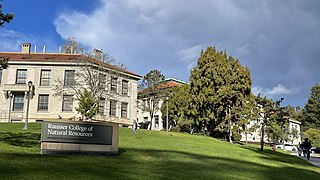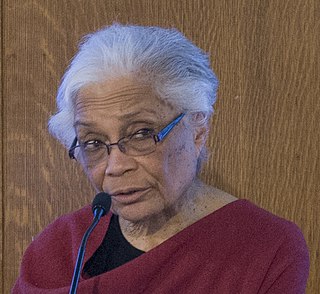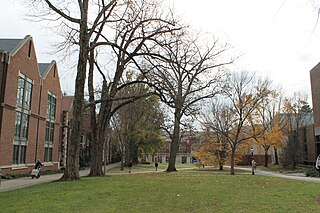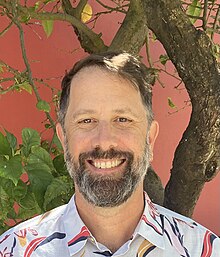The University of Technology Sydney (UTS) is a public research university located in Sydney, New South Wales, Australia. The university was founded in its current form in 1988, though its origins as a technical institution can be traced back to the 1870s. UTS is a founding member of the Australian Technology Network (ATN), and is a member of Universities Australia (UA) and the Worldwide Universities Network (WUN).

Graduate School of Architecture, Planning and Preservation (GSAPP) is the architecture school of Columbia University, a private research university in New York City. It is regarded as an important and prestigious architecture school. It is also home to the Masters of Science program in Advanced Architectural Design, Historic Preservation, Real Estate Development, Urban Design, and Urban Planning.
The Earth Institute is a research institute at Columbia University created in 1995 for addressing complex issues facing the planet and its inhabitants, with a focus on sustainable development. With an interdisciplinary approach, this includes research in climate change, geology, global health, economics, management, agriculture, ecosystems, urbanization, energy, hazards, and water. The Earth Institute's activities are guided by the idea that science and technological tools that already exist could be applied to greatly improve conditions for the world's poor, while preserving the natural systems that support life on Earth.
Daniel Paul Schrag is the Sturgis Hooper Professor of Geology, Professor of Environmental Science and Engineering at Harvard University and Director of the Harvard University Center for the Environment. He also co-directs the Science, Technology and Public Policy Program at the Belfer Center for Science and International Affairs at the Harvard University Harvard Kennedy School. He is also an external professor at the Santa Fe Institute.

Mark Antony Wigley is a New Zealand-born architect and author based in the United States. From 2004 to 2014, he was the Dean of Columbia University's Graduate School of Architecture, Planning and Preservation.

The Rausser College of Natural Resources (RCNR), or Rausser College, is the oldest college at the University of California, Berkeley and in the University of California system. Established in 1868 as the College of Agriculture under the federal Morrill Land-Grant Acts, CNR is the first state-run agricultural experiment station. The college is home to four internationally top-ranked academic departments: Agriculture and Resource Economics; Environmental Science, Policy, and Management; Nutritional Sciences and Toxicology; and Plant and Microbial Biology, and one interdisciplinary program, Energy and Resources Group. Since February 2020, it is named after former dean and distinguished professor emeritus Gordon Rausser after his landmark $50 million naming gift to the college.

Texas Tech University College of Architecture is the college of architecture at Texas Tech University in Lubbock, Texas. The architecture program has existed at Texas Tech University since 1927. Texas Tech's Master of Architecture is a professional degree and it is accredited by the National Architectural Accrediting Board (NAAB). On November 30, 2022, the school announced it would be named the Huckabee College of Architecture.

Sharon Egretta Sutton, is an American architect, educator, visual artist, and author. Her work is focused on community-based participatory research and design. She is a professor emerita at the University of Washington. In 1984, she became the first African American woman to become a full professor in an accredited architectural degree program while teaching at the University of Michigan. She has also taught at Parsons School of Design, and Columbia University.

Jeff Goodell is an American author of seven non-fiction books and a longtime contributing writer to Rolling Stone. Goodell's writings are known for a focus on energy and environmental issues. He is Senior Fellow at the Atlantic Council and a 2020 Guggenheim Fellow.

Philippe Rahm Dipl. EPFL - Ecole Polytechnique Fédérale de Lausanne - Switzerland 1993 is a principal architect in the office of Philippe Rahm architectes, based in Paris, France. His work, which extends the field of architecture from the physiological scale of the body to the climatic scale of the city has received an international audience in the context of sustainability.
Princeton University School of Engineering and Applied Science is located in Princeton, New Jersey, United States. A school within Princeton University, which is one of the eight universities of the Ivy League, it provides undergraduate and graduate instruction in six departments: chemical and biological engineering, civil and environmental engineering, computer science, electrical engineering, mechanical and aerospace engineering, and operations research and financial engineering. It has more than 1,400 undergraduates, 620 graduate students and 147 faculty members in its six departments.

Victor Olgyay was an architect, city planner, and early researcher in the field of Bioclimatic design. He was an Associate Professor at the School of Architecture and Urban Planning of Princeton University until 1970 and, with his twin brother Aladar, a pioneer in the field of Bioclimatic design in the 1950's and 60's.
Robert Harry Socolow is an American theoretical physicist and professor emeritus of Mechanical and Aerospace Engineering at Princeton University.
Peder Anker is a historian of environmental sciences, specializing in the history of ecology and ecological architecture and design. Anker is currently a Professor of History of Science at the Gallatin School of Individualized Study at New York University. Anker has received research fellowships from the Fulbright Program, the Dibner Institute and the Max Planck Institute for the History of Science, and been a visiting scholar at both Columbia University and University of Oslo.
Hilary Sample is an American architect, principal, and co-founder of the award-winning architecture firm MOS Architects in New York City.

Princeton University School of Architecture is the name of the school of architecture at Princeton University. Founded in 1919, the School is a center for teaching and research in architectural design, history, and theory. The School offers an undergraduate concentration and advanced degrees at the master's and doctoral levels.
Frank Kreith was an American mechanical engineer.
Torkwase Dyson is an interdisciplinary artist based in Beacon, New York, United States. Dyson describes the themes of her work as "architecture, infrastructure, environmental justice, and abstract drawing." Her work is informed by her own theory of Black Compositional Thought. This working term considers how spatial networks—paths, throughways, water, architecture, and geographies—are composed by Black bodies as a means of exploring potential networks for Black liberation. She is represented by Pace Gallery and Richard Gray Gallery.
John Harte is an American ecologist and Professor of the Graduate School in the Energy and Resources Group at the University of California at Berkeley. His work includes investigation into a maximum entropy theory of ecology and long-term experiments on the effects of climate change on alpine ecology.

The World Around is a global design conference and media organisation that publishes video presentations and short documentary films under the slogan "Architecture's Now, Near, and Next" covering contemporary ideas and projects in architecture and design. The organisation is a 501c3 registered public charity in the United States, and seeks to "make the best new ideas in architecture accessible to all." The platform has a particular focus on climate change and social justice issues, and hosts the Young Climate Prize, a mentoring scheme for climate change-focused designers between the ages of 13 and 25.










